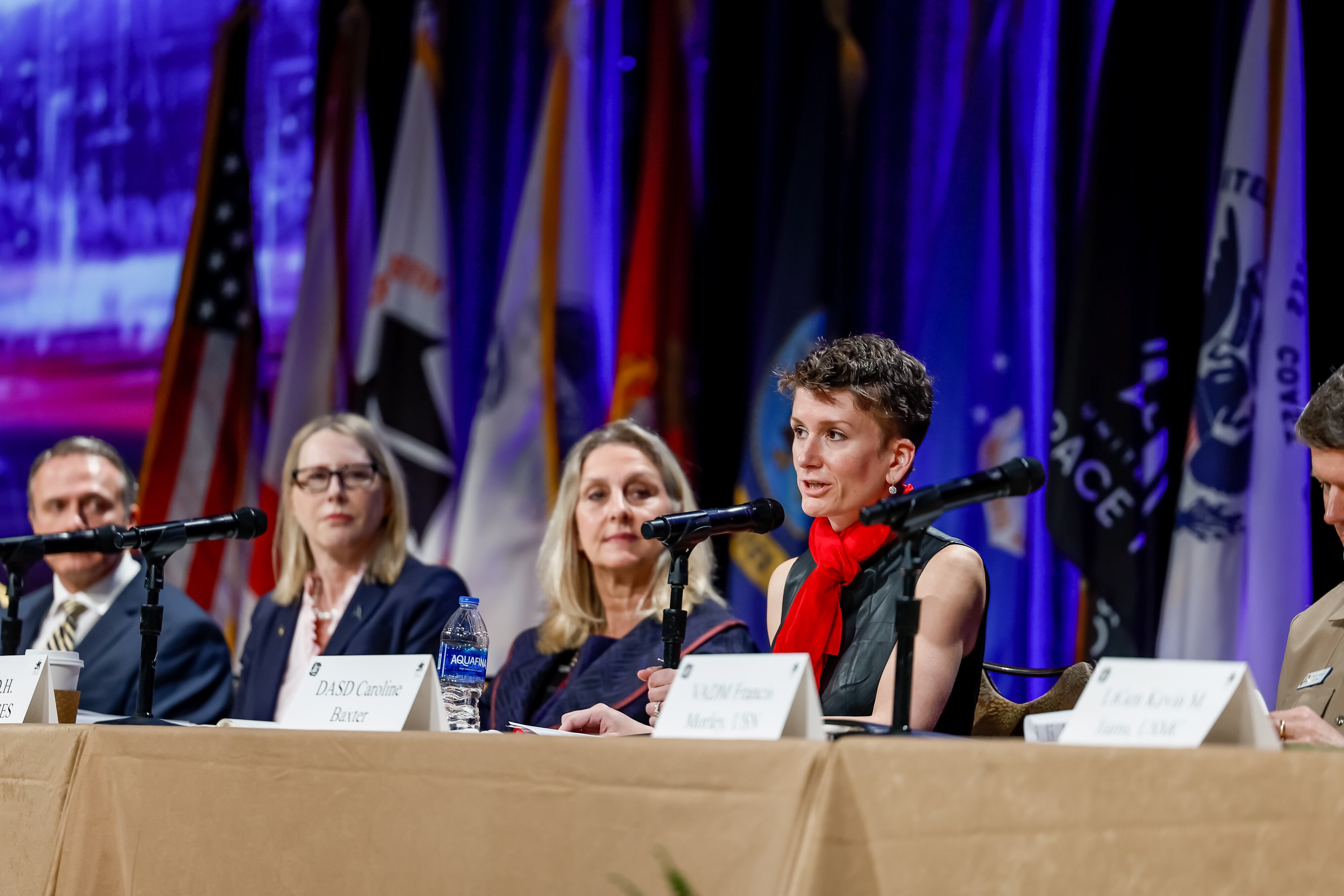ORLANDO, Fla. — The United States and its allies must make substantial progress toward more modern, collaborative military training as Russia’s war in Ukraine continues to rattle NATO and the prospect of conflict with China looms in the Pacific, defense officials said at an annual conference here.
Military leaders from across the world argued it’s time to resolve the longstanding issues with security clearances, syllabus design, hardware and software integration and quick-turn flexibility that keep the U.S. armed forces and foreign countries from working together.
They also called on companies to stay a few steps ahead of the global security situation and anticipate what training will be needed. The U.S. must invest in that enterprise or risk falling short in a conflict, they said.
“Gone are the days when we could hand-wave training away. Warfare is obviously way too complicated for that now,” said Caroline Baxter, the Pentagon’s top training official.
She dubbed fiscal 2023 the Pentagon’s “year of training.”
“We are running out of time to rethink, to refresh and to transform in military training. My team and I are really running full tilt to address it head-on,” she said.
To capitalize on a period of “unprecedented” attention to military training, Baxter’s office is launching a high-level panel known as the “Military Training Executive Steering Group.”
That forum will bring together three-star generals to make battlefield training more multidisciplinary and digitally interconnected. It’s slated to launch within the next couple of months, Baxter said.
“Now, DOD’s going to have a process to identify training gaps and coordinate current and future training activities and capabilities to fill them,” she said. “It’s going to help the training community continue focusing on great power competition without losing sight of those potential ‘black swan’ events.”
The Pentagon is notorious for its “stovepipes,” meaning each service’s weapon systems and other software aren’t designed to share data with the others. That includes its training assets as well.
Simulators are gradually evolving to “talk” to each other within each military branch, across the joint force and around the world. Officials want those systems, as well as their training exercises, to better incorporate augmented and virtual reality and real-time combat data.
The goal is to “field a … DOD-wide training capability providing realistic, high-end, interoperable, multidomain training against a peer adversary in a contested environment” in the next decade, Baxter said.
“It’s not enough to have the right equipment if we don’t have the people trained to know how to use it, and when to use it and why,” she added.
Baxter’s office continues to back regional initiatives like the Pacific Multidomain Training and Experimentation Capability, an effort launched by former U.S. Indo-Pacific Command boss Adm. Phil Davidson.
It aims to connect “all the different training areas we already use in a live, virtual, constructive, [artificially intelligent], computer-enhanced reality, which saves money,” said Wallace Gregson, a retired Marine Corps lieutenant general who commanded the service’s forces in the Pacific, at the Hudson Institute in 2020.
“It’s a way to train without burning gasoline or ammunition or flight hours. … It’s also a way where we can test without hazard to troops or to civilians,” he added.
That’s possible through technology like the Joint Simulation Environment, a government-owned, developmental system that lets troops train together in great detail online.
“We’re also working … to create and implement realistic, contested and degraded [electromagnetic spectrum] operations,” Baxter said, including to speed up development of low-cost threat emitters that can electronically cut off troops from the rest of the force.
“We’re trying to create a new paradigm for governing training, for making sure that all of these efforts that might seem disparate, are synchronized, unified and all marching at the same pace, in the same direction,” she said. “If we’re going to have to train as we fight across all levels, that’s going to be pretty complicated.”
The Air Force and Navy, for example, are exploring how to use the JSE for flight training in the F-35 Lightning II.
Wayne Schatz, the Air Force’s studies and analysis director, recalled a recent visit to Naval Air Station Patuxent River, Maryland, where they demonstrated the ability to show an operational F-35′s live flight management system inside a simulator.
“The potential there to keep our training platforms aligned with our actual aircraft as they get updates to software is really powerful,” he said.
JSE does have its shortcomings, noted Maj. Gen. Al Miller, who handles training and readiness policy at Air Force headquarters.
It was built as a testbed, not a training module, so its capabilities are more limited than troops might like. But the military is starting to buy more dual-use technology that is flexible enough for testing but detailed enough for training.
Maj. Gen. Shawn Bratton, head of the Space Force’s Space Training and Readiness Command, questioned whether it would be cost-effective to run highly technical orbital training simulations through the JSE. He also wondered what might be lost in translation when running larger training missions through the digital sphere.
Baxter urged leaders across the armed forces to be forthcoming about their wants, needs and problems with training modernization.
“No one likes to hear, ‘I’m OSD [and] I’m here to help,’” she quipped. “Nonetheless, what we’re trying to build is something that’s going to serve all of this community.”
Rachel Cohen is the editor of Air Force Times. She joined the publication as its senior reporter in March 2021. Her work has appeared in the Washington Post, the Frederick News-Post (Md.), Air and Space Forces Magazine, Inside Defense, Inside Health Policy and elsewhere.





